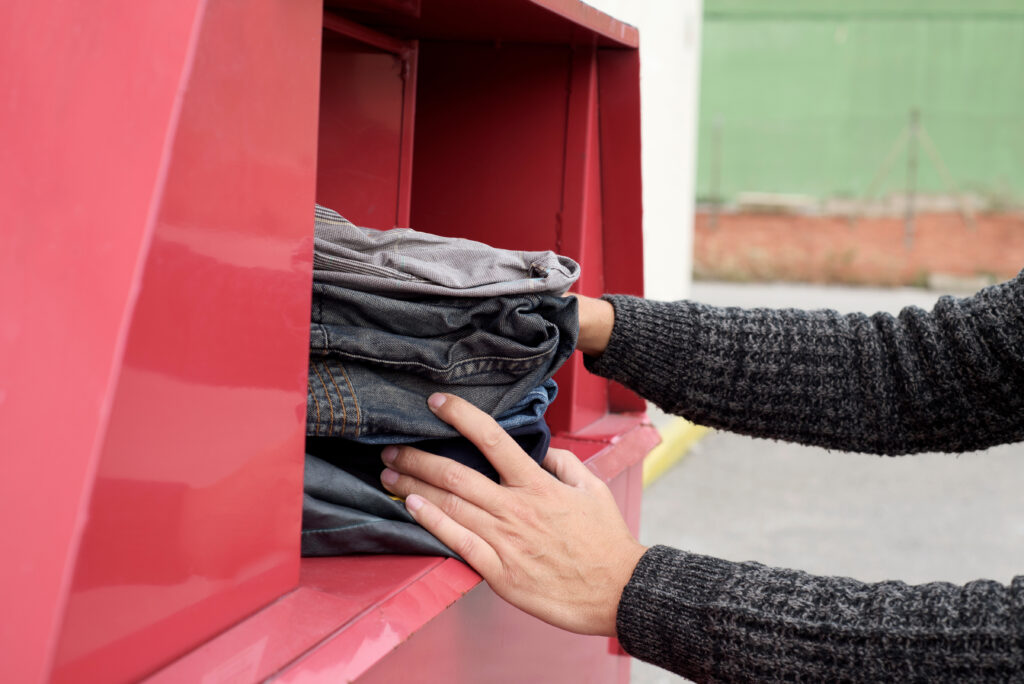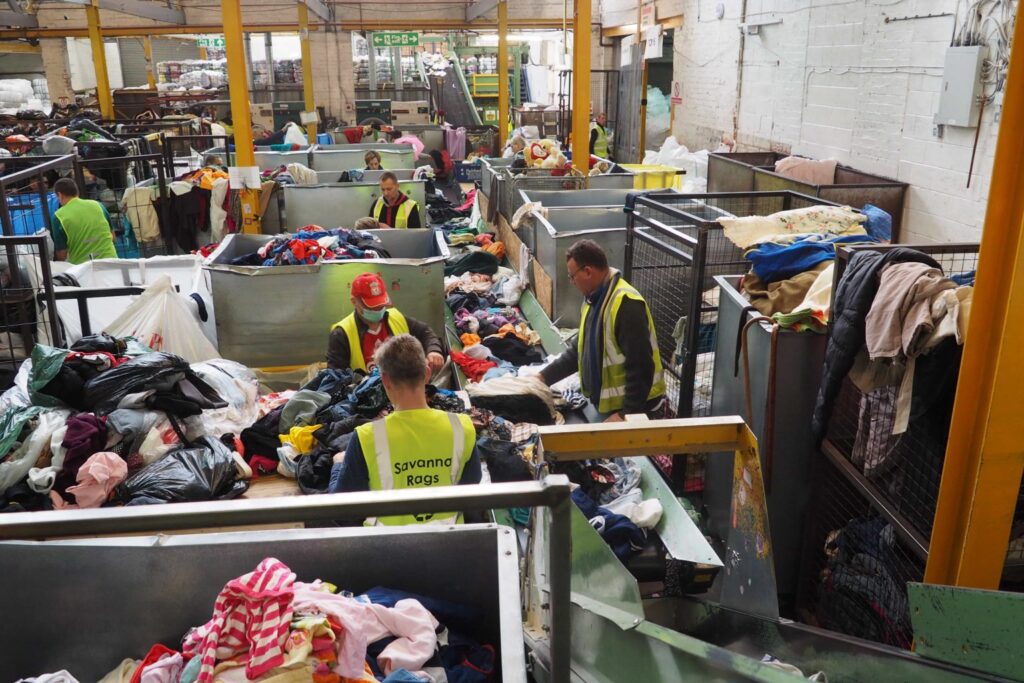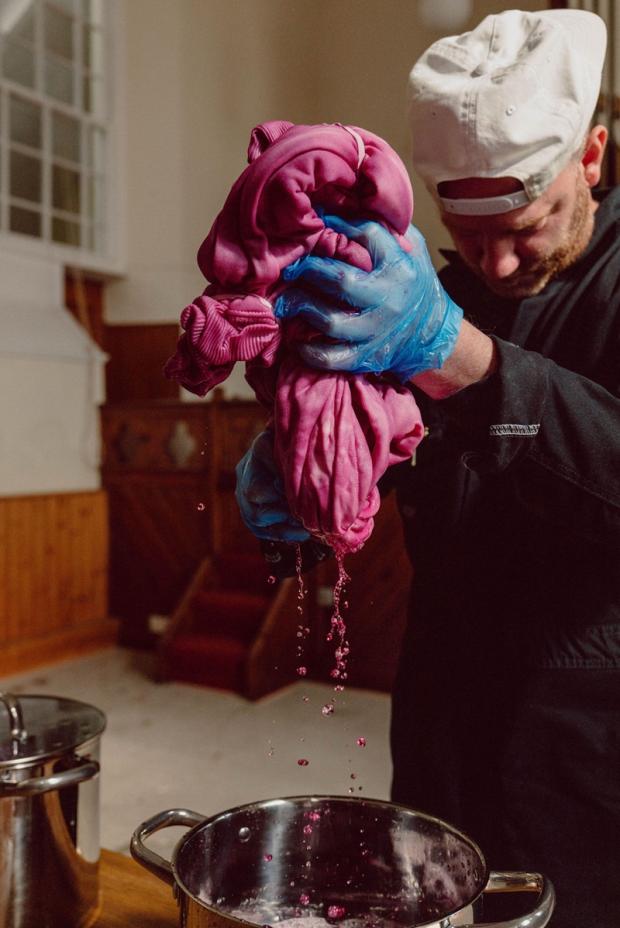Even if excess stock was used for Energy from Waste (EfW), the industry estimates that dealing with the volume of textiles waste the UK produces could cost the UK economy approximately £200 million a year.
Merchants told Letsrecycle.com that the volume of unusable textile waste is likely much higher than being reported, which means that this figure could be an underestimate.
While the issue is currently contained to rural areas, it could be indicative of a looming problem for the second-hand textiles sector that may lead to the closure of many more collector merchants – making it less likely for charity shops in all areas to be reached.
The sector has cautioned that the loss of significant infrastructure might have impacts on the ability to establish a circular textile industry in the future.
What is causing the closure of the collector merchants?
The warning from industry comes as the sector is being overwhelmed by the amount of “ultra-fast fashion” being produced by brands like Shein and New Look.
Clare Harby, general manager at Ward, explained: “The quality of clothing is on a huge decline whereas the quantity is on the incline.
“A lot of that is down to fast fashion and a shift in mindset around throwaway textiles. Often, even if an item is in very good condition with tags, the quality is still inferior to what we would have seen on the high street 20 years ago.
“At the moment, the textiles we process are only fit for energy from waste.”
Robin Osterley, chief executive of the Charity Retail Association (CRA), added: “A lot of our members find it difficult to stock their shop floors with high quality items.
“Diverting straight to incineration isn’t a widespread issue as of yet but it’s certainly happening in some places.”
At the same time, geopolitical factors have also hit the industry. Ukraine was formerly a market for many of the higher value used textiles coming from the UK. The Red Sea Crisis has also said to have caused shipping delays, and many exporters have needed to reroute around the Cape of Good Hope at the bottom of Africa.
What should be happening to these textiles?
Traditionally in the UK, textiles which charity shops cannot sell are collected by “collector, sorter and processor” merchants which usually grade the items by quality to either be discarded as waste or for reuse in secondary markets in Africa and Asia. The merchants are charged a fee to “buy” the stock from the shops.
Currently charity shops sell an average of two thirds of donations to merchants and sell about a third front-of-house.
According to the Charity Retail Association (CRA), charity shops get around 2% of their income from this stream. Additionally, some charity shops, especially in more rural parts of the country, are budgeting for this to be zero of their income in 2025.
However, as textiles quality decreases due to ultra-fast fashion merchants are struggling to source quality textiles to be sent overseas for reuse and much of the stock is only suitable to be sent to waste management companies. The industry estimated that this applies to around 70% of what they collect from charity shops.
Merchants have said that they are in “crisis” as they can no longer afford to collect the low-quality stock from charity shops at their own expense. A sector consultant estimated that only 15% of merchants now remain open compared to 10 years ago.
As a result, the industry is calling for a gate fee to be charged to charity shops for what is essentially now a waste management service.
When asked if a gate fee seemed likely, Osterley said: “Around 6% of what is given to us ends up being sent straight to incineration and is therefore classed as waste.
“No one has yet introduced gate fees and I think it’s unlikely to happen – at least not in the short term.”
Why are we not recycling textiles?
Recycling technology and capacity in the UK and globally is nowhere near where it needs to be to meet demand and process the kind of material being sorted.
For the most part, “textiles recycling” is a myth and does not happen at scale. What is often referred to as “recycling” is actually either reuse in mostly foreign markets or incineration. Merchants are an essential part of this process.
However, the UK is trailing behind other countries when it comes to the funding needed to develop textiles recycling at scale.
The US for example has allocated $14 billion in grants to stimulate a circular textile industry, with $1 billion specifically allocated for research towards textile use and recycling. Meanwhile the EU introduced a Strategy for Sustainable and Circular Textiles in 2022 which included legislation around extended producer responsibility for textiles (tEPR).
UK circular economy minister Mary Creagh recently told representatives from the used textiles sector that there was “no money” to prevent the looming crisis and although a textiles EPR has been mentioned by government officials, there is yet to be any official movement in this area and a consultation that was meant to come out in 2024 never materialised.
A number of collector, sorter and processor merchants have called for the charity sector and waste management companies to “hold tight” and continue supporting them while the industry and government catches up in innovation and funding.
The CRA is running a working party including members and merchants trying to come up with solutions – both in trying to make life easier and less expensive for merchants and trying to shift more stock through concepts like kilo sales.
Tomorrow (6 February 2025), environmental action NGO WRAP will host its Textiles 2030 Circular Summit.
The programme is a voluntary initiative supporting businesses and organisations within the fashion and textiles industry to transition to more sustainable and circular practices by the end of the decade.
To find out more about the crisis, watch Letsrecycle.com’s interview with members of the industry here.












Hi, great article. In my local town the charity shops are rammed with stock but for items that are donated for reuse the price most charge are too high! If some reduced their price they would make more sales.
Also there has been no metion of any textile recycler, I am not close to this area currently but I belived that items unfit for reuse were actually recycled rather than textiles going to EfW and made into rags or other uses – is this not the case? Surely if the problem is so vast then there’s a commercial opportunity for this material?
The question could also be raised that LAs should (and I’m sure many do) accept unsold donated items from charity shops as by definition this has originated from residents and is household ‘waste’ that rather than be taken to a HWRC is donated to a charity shop?
I agree we would like to see more from government on this – although with the whole of Simpler Recycling and associated reforms i’m sure Defra have their hands full but a missed opportunity nonetheless.
Hi Lee,
Thank you so much for your comment.
Unfortunately true fibre-to-fibre textiles recycling does not happen at scale and is mostly in development stages. It’s very hard to recycle textiles made of mixed fibres such as polyester blends (which most are these days). This means textiles are mostly reused – we could call this “upcycling” or in limited cases recycling – through ragging and other reuse methods. However the market for the end product is relatively low and does not meet the number of textiles coming into the second-hand market.
Best wishes,
Savannah